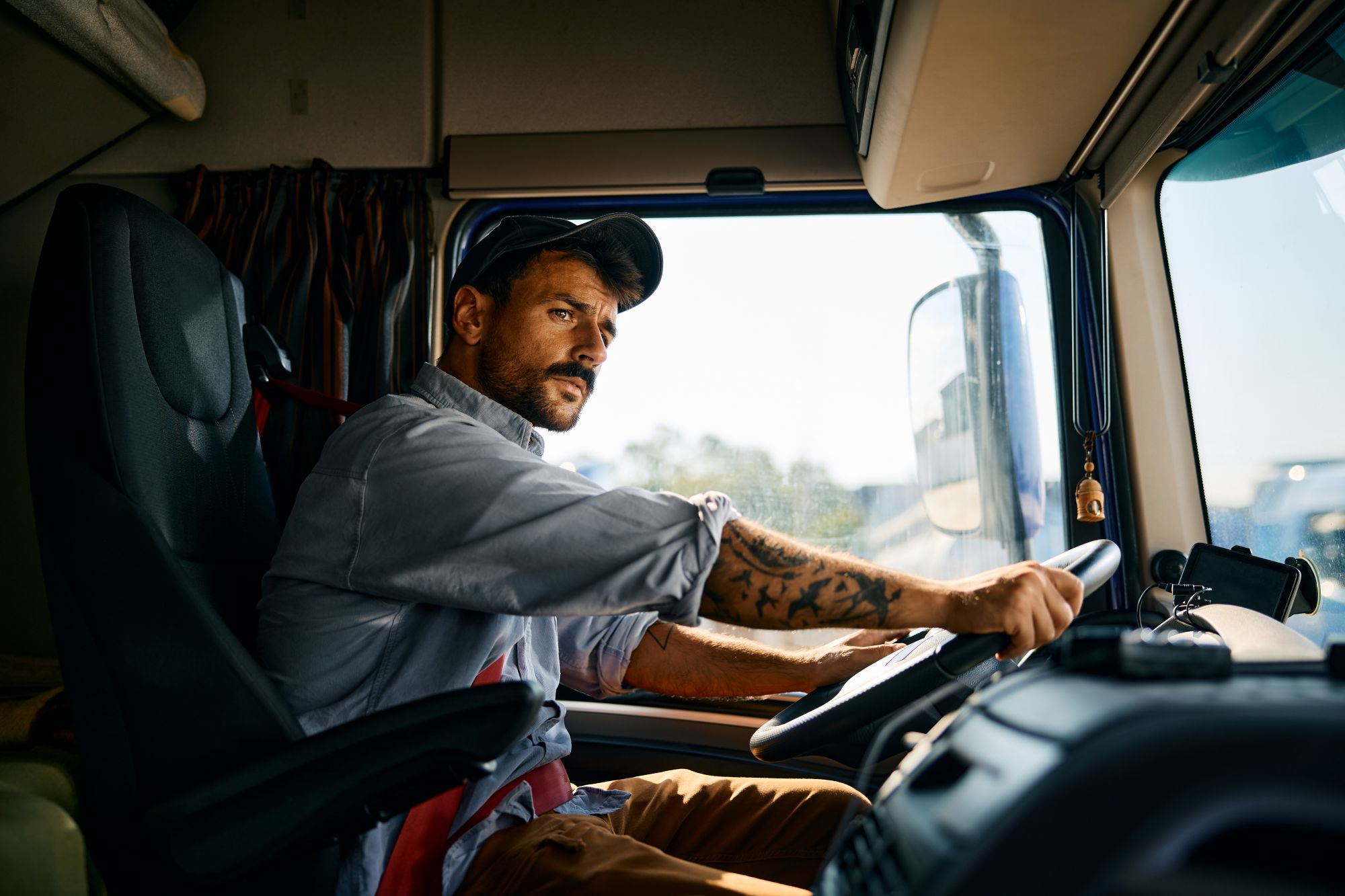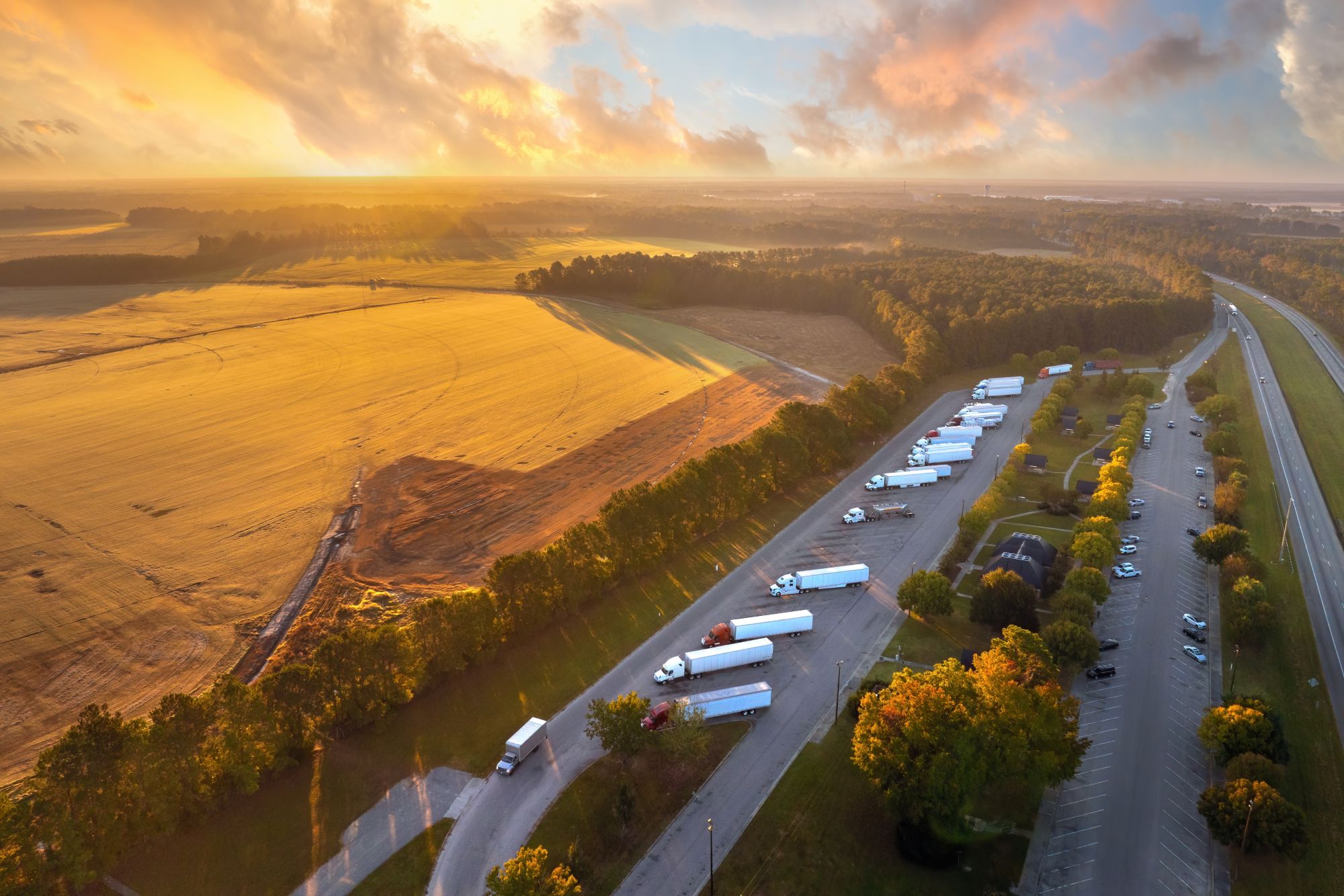
Guest
Cum să devii șofer de camion
Creat: 26.09.2025
•
Actualizat: 26.09.2025
În întreaga Europă, cererea de șoferi profesioniști de camioane nu a fost niciodată mai mare. În Regatul Unit, Road Haulage Association estimează că 200 000 de noi șoferi de camion vor fi necesari în următorii cinci ani pentru a menține lanțurile de aprovizionare în funcțiune. Și situația este aceeași în cea mai mare parte a Europei. Conform datelor International Road Transport Union, în 2024 existau 426 000 de posturi de șoferi neocupate în Europa.
Dar acest lucru creează o oportunitate. După cum [am explorat anterior] (https://snapacc.com/newsroom/is-logistics-a-new-alternative-to-further-education-for-school-leavers/), industria transportului rutier de mărfuri oferă perspectiva unui loc de muncă stabil pentru cei care părăsesc școala și iau în considerare alternative la universitate și pentru adulții care doresc să se recalifice. Devenirea unui șofer de camion este o cale către venituri sigure și o carieră structurată.
Întrebarea pe care mulți și-o pun este: cum să devii șofer de camion? Răspunsul nu depinde doar de formare și permise, ci și de înțelegerea a ceea ce înseamnă să te alături unei profesii care menține în mișcare economia Europei.
Cine poate deveni șofer de camion?
Una dintre principalele atracții ale unei cariere de șofer este accesibilitatea sa. Nu aveți nevoie de o diplomă universitară sau de ani de formare specializată pentru a începe; un permis auto standard (categoria B) este tot ceea ce este necesar înainte de a lucra la calificările profesionale.
Vârsta minimă pentru formarea profesională este de 18 ani atât în Regatul Unit, cât și în UE, ceea ce înseamnă că absolvenții de școală pot trece direct de la permisul auto la formarea profesională a șoferilor de vehicule grele. Acestea fiind spuse, multe firme preferă ca șoferii internaționali să aibă cel puțin 21 de ani, având în vedere responsabilitatea suplimentară pe care o presupune transportul pe distanțe lungi.
Aptitudinea medicală este, de asemenea, importantă. Fiecare solicitant trebuie să treacă un examen medical înainte de a putea deține un permis de conducere pentru vehicule grele. În Regatul Unit, acest lucru implică o serie de teste, [inclusiv] (https://www.hgvt.co.uk/hgv-medical/) verificarea vederii, citirea tensiunii arteriale și depistarea unor afecțiuni precum epilepsia, bolile de inimă sau apneea în somn.
Țările europene aplică aceleași standarde medicale la nivelul UE, cu reînnoiri periodice care garantează că șoferii rămân sănătoși pe tot parcursul carierei.
Cât câștigă un șofer de camion?
Pentru multe persoane care iau în considerare trecerea la șofatul profesionist, o preocupare cheie este: cât câștigă șoferii de camioane?
Răspunsul variază în funcție de locație, experiență și tipul de activitate desfășurată, dar în Europa, profesia oferă un salariu competitiv în comparație cu alte locuri de muncă pentru începători.
● Un șofer nou în Marea Britanie va începe de obicei cu aproximativ 27.000 de lire sterline pe an. Cei care lucrează pe distanțe lungi, în special pe rute internaționale, își pot vedea salariul crescând spre 45.000 de lire sterline - uneori mai mult dacă transportă încărcături specializate sau periculoase. cei care manipulează încărcături specializate, mărfuri periculoase sau care operează peste granițe.
● În Spania, salariile tind să fie mai mici decât în Regatul Unit, de obicei în jur de 36.600 €, deși firmele mari de logistică din marile orașe pot oferi mai mult.
● Polonia a înregistrat o cerere puternică de șoferi în ultimii ani, dar salariile rămân modeste, cu o medie de aproximativ 92.400 PLN (aproximativ 21.690 EUR).
● România se situează la capătul inferior al scalei, șoferii câștigând în general 80.550 RON (16.000 €), deși contractele internaționale de transport pot crește semnificativ salariul net.
Desigur, salariul nu este totul. Multe companii oferă plata orelor suplimentare, alocații de masă sau bonusuri pentru atingerea obiectivelor de livrare. Având în vedere că cererea de șoferi nu dă semne de încetinire, acest loc de muncă oferă și un nivel de siguranță pe care puține alte cariere entry-level îl pot egala.
De ce permis de conducere pentru camioane am nevoie?
Înainte de a vă putea urca la volanul unui camion, aveți nevoie de permisul potrivit. În Regatul Unit, acest lucru înseamnă trecerea de la un permis auto standard la ceea ce se numește în mod oficial permis pentru vehicule mari de marfă (LGV) sau vehicule grele de marfă (HGV). Termenii sunt adesea utilizați în mod interschimbabil, dar ambii acoperă aceleași categorii de conducere profesională.
Unele persoane încep cu un permis de categoria C1, care acoperă vehicule de dimensiuni medii între 3,5 și 7,5 tone - adesea folosit pentru camioane de livrări mai mici.
Cu toate acestea, cei mai mulți șoferi de camioane aspiranți trec direct la permisul de categoria C, numit uneori permis de categoria 2 HGV. Aceasta vă permite să conduceți vehicule rigide de peste 7,5 tone. Pentru cei care doresc să conducă camioane articulate - vehiculele mai mari utilizate în mod obișnuit pe distanțe lungi și pe rute internaționale - este necesar permisul de categoria CE (clasa 1).
Alături de aceste calificări se află Certificatul de competență profesională a conducătorului auto (CPC), o cerință legală atât în Regatul Unit, cât și în UE. Acest certificat implică o combinație de formare inițială și cursuri periodice de perfecționare, menite să mențină șoferii la curent cu siguranța, reglementările și aptitudinile rutiere.
Acest sistem reflectă cadrul de acordare a licențelor la nivelul UE. Principalele diferențe între țări constau în furnizorii de formare, costurile implicate și, în unele locuri, disponibilitatea locurilor de testare.

Cum să vă obțineți permisul HGV
Obținerea permisului HGV este primul pas către șofatul profesionist. În Regatul Unit, puteți începe procesul odată ce dețineți un permis auto standard de categoria B. De aici, solicitați un permis provizoriu pentru camioane, care vă permite să începeți formarea pe vehicule mari de marfă.
Formarea în sine combină elemente teoretice și practice: sesiuni în sala de clasă privind siguranța rutieră și reglementările, urmate de conducere supravegheată în vehicule grele. Candidații trebuie, de asemenea, să parcurgă module pentru obținerea Certificatului de competență profesională pentru șoferi (CPC), care garantează că șoferii sunt echipați nu numai pentru a conduce vehicule în siguranță, ci și pentru a gestiona cerințele zilnice ale transportului.
Cât costă să devii șofer de camion?
Una dintre cele mai frecvente întrebări pentru oricine se gândește la această carieră este cât costă formarea de șofer de camion. În Regatul Unit, prețurile variază în funcție de furnizor, locație și dacă vă pregătiți pentru un permis de categoria C sau pentru cel mai avansat de categoria CE. În medie, noii șoferi se pot aștepta să cheltuiască între 2.000 și 3.500 de lire sterline pentru a acoperi controalele medicale, taxele pentru permisul provizoriu, testele teoretice, instruirea practică, modulele CPC și testul final de conducere. Unele companii, în special firmele mari de logistică, oferă programe de subvenționare sau de finanțare integrală a formării în schimbul unui angajament de muncă, făcând astfel traseul mai accesibil.
În alte părți ale Europei, cifrele nu sunt prea diferite. În Spania, formarea costă, în general, între 2.000 și 3.000 de euro pentru formare completă și certificare. În Polonia, cifra este mai mică, cu o medie de 1.500-2.500 EUR. România are unele dintre cele mai mici costuri de formare din Europa, mulți candidați plătind între 1.000 și 1.800 de euro pentru a se califica, deși salariile de început tind să reflecte această barieră mai mică la intrare.
De cât timp este nevoie pentru a deveni șofer de camion?
Timpul necesar pentru a vă califica ca șofer de camion depinde de locul unde vă pregătiți, de tipul de permis pe care îl doriți și de cât de repede vă puteți asigura datele de examinare. În Regatul Unit, majoritatea persoanelor își finalizează formarea și își promovează testele în termen de două până la patru luni. Unele cursuri intensive comprimă procesul în câteva săptămâni, deși mulți șoferi consideră că distanțarea lecțiilor îi ajută să asimileze mai eficient competențele.
În Spania și Polonia, procesul este similar, deși listele de așteptare mai lungi pentru locurile de examinare pot prelungi termenul. În Polonia, cererea mare de șoferi profesioniști a creat blocaje la centrele de formare, ceea ce înseamnă că unii candidați așteaptă mai multe luni înainte de a susține examenul practic. România are unul dintre cele mai rapide parcursuri, formarea și testarea fiind adesea finalizate în termen de opt până la douăsprezece săptămâni.
Iar învățarea nu se oprește odată ce v-ați obținut permisul. Fiecare șofer profesionist trebuie să efectueze 35 de ore de formare CPC la fiecare cinci ani, pentru a-și menține competențele la zi și pentru a se asigura că sunt pregătiți pentru cele mai recente reglementări și standarde de siguranță.
Cât timp poate conduce un șofer de camion?
Odată ce ați obținut calificarea, această meserie vine la pachet cu limite stricte privind timpul pe care îl puteți petrece la volan. Aceste limite sunt concepute pentru a proteja atât șoferii, cât și ceilalți participanți la trafic prin reducerea oboselii.
În Regatul Unit și în UE, regulile sunt aceleași. Șoferii pot petrece [maximum nouă ore la volan] (https://www.gov.uk/drivers-hours/eu-rules#:~:text=9%20hours%20in%20a%20day,in%20any%202%20consecutive%20weeks) în fiecare zi, timp care poate fi extins la zece ore de două ori pe săptămână. Limitele săptămânale se ridică la 56 de ore de condus, fără a depăși 90 de ore în două săptămâni consecutive.
De asemenea, un șofer trebuie să ia o pauză de cel puțin 45 de minute după 4,5 ore de condus. De asemenea, aceștia au dreptul la perioade de odihnă zilnice și săptămânale pentru a se recupera înainte de a se întoarce la muncă.
Aceste norme sunt monitorizate îndeaproape, cu tahografe instalate în vehicule pentru a înregistra orele și a asigura conformitatea. Pentru cei care lucrează pe rute pe distanțe lungi, cum ar fi șoferii spanioli care acoperă Peninsula Iberică sau transportatorii polonezi care transportă mărfuri peste granițele estice ale UE, aceste limite modelează ritmul muncii. Ele determină când și unde se opresc șoferii, făcând accesul la zone de odihnă sigure și securizate o parte vitală a zilei de lucru.
Începutul ca șofer de camion
A deveni șofer de camion nu înseamnă doar să treci testele. Este vorba despre a intra într-un rol care implică responsabilități reale, dar care oferă și oportunități pe termen lung. Cu permisul potrivit, formarea potrivită și hotărârea de a accepta viața pe șosea, este o carieră care poate oferi atât stabilitate, cât și progres.
La SNAP, știm cum arată aceste călătorii. De aceea, lucrăm cu flote și șoferi din întreaga Europă pentru a le face mai sigure, mai simple și mai confortabile - de la parcări sigure și facilități de bunăstare mai bune la instrumente digitale inteligente care economisesc timp și stres. Fie că sunteți la început de drum sau conduceți de ani de zile, suntem aici pentru a vă sprijini pe fiecare kilometru parcurs.
Descărcați intruck app astăzi pentru a găsi parcări, facilități și servicii de încredere, oriunde vă duce traseul.



